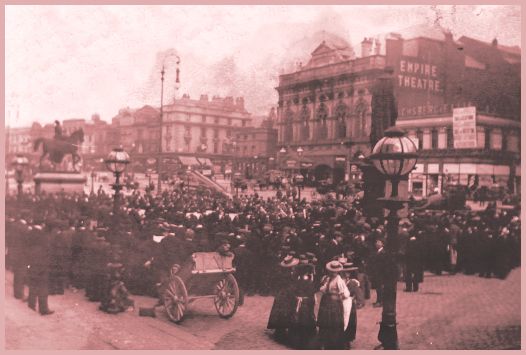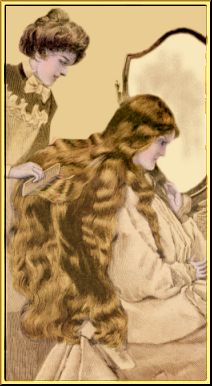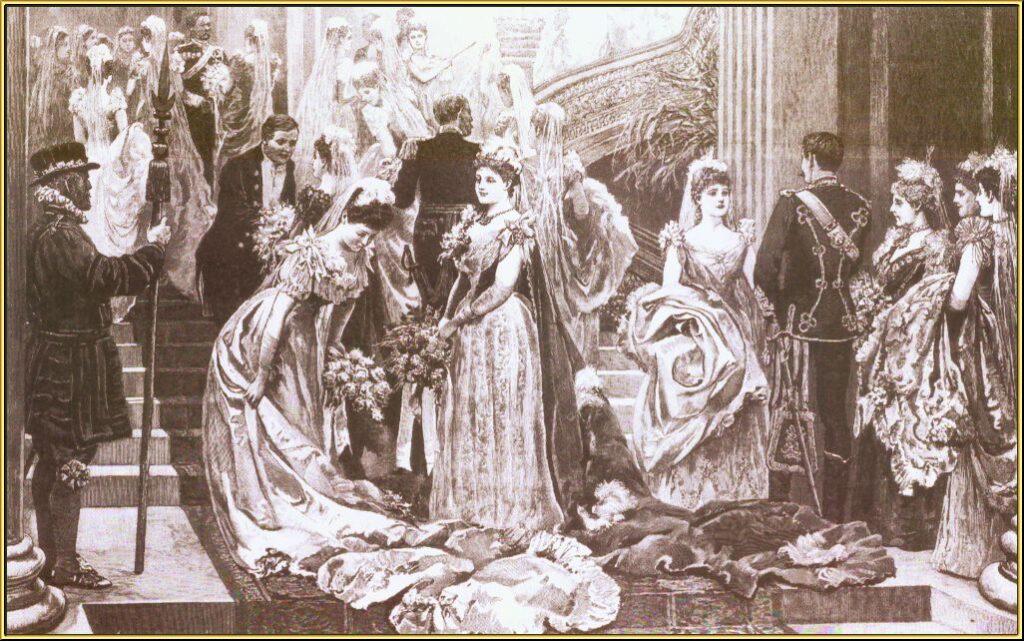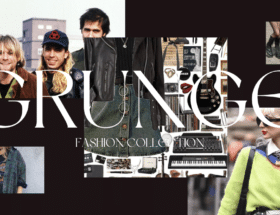By Pauline Weston Thomas for Fashion-Era.com

The Mood of Edwardian Society
- The Mood of Edwardian High Society
- Dating the Edwardian Era
- Influence Of King Edward VII on Edwardian High Society
- The Marlborough Set
- Edwardian High Living Above Real Means
- The Lost Golden Age - The Edwardians
- Nothing Succeeds Like Excess
- Edwardian Social Codes for Taking Lovers
- Edwardian Cutting
- Unmarried Edwardian Girls
- Projecting Body Image - Putting up the Hair
- Coming Out into Edwardian High Society
- The Edwardian London Summer Season
- Being Presented at Court - Debutantes Coming Out
- Entertaining King Edward VII
- Edwardian Society Menus
- The Edwardian Shooting Party
The Mood of Edwardian High Society
It could be said that Edwardian Britain belonged to another age, almost another world. The truth is that time plays havoc with the mind's perception of things past. If our view of the Edwardian age is a distorted one, in which we believe that life was one festive round of parties, splendid banquets and extravagant clothes, then it may be that archive films of the rich along with television serials such as 'Edward VII', 'The Forsyte Saga', Upstairs Downstairs and 'Lillie' have played an important part in reinforcing the myth of 'the golden age'.
On the other hand, these serials have awakened a new interest in the era. An abundance of factual books recounting the social history of the Edwardian Era exist and they are revealing and always fascinating.
Dating the Edwardian Era
All available literature is clear on one point, that the Edwardian Era cannot be precisely isolated to the period of King Edward VII's short reign (1901-1910). The term Edwardian may be taken to mean the period which encompasses the mid-1890s to the outbreak of World War 1 in 1914. The Titanic era is 1912.
Influence of King Edward VII on Edwardian High Society
London society in the Edwardian Era was dominated by the King. The legend that surrounds the era is primarily due to the influence of Edward VII. He was a man not only larger than life, but with an insatiable appetite for a wide variety of indulgences from wine to women. A picture of him in ceremonial robes is shown in the page heading.
He favoured ripe bodies and ripe minds, lovely women with curves that emphasised their womanhood. He liked to be surrounded by handsome women of mature years with generous natures. All these things the King appreciated in women, and because of him all these things existed.
You are reading an original Edwardian Society article by Pauline Weston Thomas at www.fashion-era.com ©
The Marlborough Set
As Prince of Wales, and later as King, Edward VII was a broadminded, fun-loving man and he mixed, with some freedom, with men and women of all classes. A privileged few gained access to his personal circle of friends known as the 'Marlborough Set'. Wealth rather than birth was a passport to the society he dominated.
People soon realised that the doors were open to anyone who could succeed in winning the King's interest by ostentatious display. Even so his personal set was fairly small made up from a selection of people from the main six hundred London society families.
Edwardian High Living Above Real Means

This did not prevent others from considering themselves to belonging to society. Many autobiographies reveal that persons who were on the fringe of society imitated and aspired to a way of life that only one seventeenth of the population could really afford. A third of the population, in attempting to emulate the really rich, was living above its means, because the image that Edwardian Society wished to present was one intended to fulfil the King's personal demands.
Ordinary people were beginning to question differences between society, but the rich continued to live in the style they knew best.
The Lost Golden Age - The Edwardians
It is this image of apparent splendour, extravagance and excess that lingers on, and which prompted J. B. Priestley to describe the era as:-
' the lost golden age...... all the more radiant because it is on the other side of the huge black pit of war.'
In reality, the lost golden age belonged only to Edwardian High Society, where wealth, birth and manners were the prime qualifications for commanding respect and obedience from others. High Society resembled a club, not a caste, and the image was reinforced by a laborious set of rules and formalities which served to emphasise the distance between those in Society and those not in Society.
You are reading an original Edwardian Society article by Pauline Weston Thomas at www.fashion-era.com ©
Nothing Succeeds Like Excess
In 'A Woman of No Importance' , Oscar Wilde wrote 'Moderation is a fatal thing, Lady Hunstanton. Nothing succeeds like excess.' This statement highlighted the conspicuous consumption of Edwardian society hostesses. These ladies were an almost different breed from ordinary women. Their like was never seen again after the First World War, not even in the ostentatious 1980s.
Edwardian Social Codes for Taking Lovers
Love affairs were perhaps the only real excitement the rich experienced, fettered as they were with time-consuming rigid formality and an elaborate code of etiquette. The sexual intrigue that inevitably occurred added impetus to an otherwise dull, but leisurely life.
High Society to guard its prestige, invented a peculiar social code where husbands and wives took lovers. The majority of husbands and wives were prepared to ignore extra-marital affairs so long as an outward appearance of domestic bliss existed, and the wife had served her duty and provided several heirs.
This attitude had prevailed since the Prince of Wales started to have affairs with not only noble ladies, but also actresses, and firm rules intended as guide lines, had been made known to his circle of acquaintances.
Edwardian Cutting
The rules existed to ensure that the tenor of family life was not spoiled by sexual exploits, and any indiscretions which gave rise to public gossip were punished by social death or 'cutting'. Swiftly and efficiently names could be removed from guest lists, so that those who deviated from the expected behaviour and were publicly indiscreet soon found themselves almost socially extinct.
Unmarried Edwardian Girls
Surprisingly, unmarried girls of the Edwardian period were never considered 'fair game', but if they offended against the rules, they too could find their names struck off the guest lists and their chances of a good marriage ruined.
The chief business of the upper-class girl was to dine and dance until she married, eventually becoming a society hostess. Even when safely engaged, she would not be allowed to drive alone in a carriage with her fiancé, and she was expected to remain innocent and virginal. Once married of course, she could be eyed thoughtfully, by both single and married men.
Projecting Body Image - Putting up the Hair

A girl signalled that she was ready for marriage and the social round by projecting her 'body image'. She achieved this by using a series of signs and symbols, the first of which was putting up her hair:-
Brushing the hair, a young woman's crowning glory.
From an advert in the Lady's Realm for 'Tatcho' a hair tonic.
'Loose, uncut hair is seen both as a symbol of virginity and a symbol of promiscuity..... The girl in Edwardian England who put up her hair to signify that she had reached maturity was symbolically offering her virginity in the marriage market.' and
'Girls often looked forward to the privilege of lengthening their skirts and doing up their hair with much the same ardour as older women now seek to preserve the external signs of adolescence.'
Coming Out into Edwardian High Society
The period when a girl joined society was a formality called 'coming out', and usually took place when she reached eighteen. Most aristocratic families gave girls little preparation for this; the majority brought their children up in the country where they developed a love of outdoor life.
Girls received little education other than learning to play the piano and to dance, plus a good working knowledge of French and German. This, together with a sound training in table manners, was all that was considered necessary for someone who could, overnight, become a society debutante.
You are reading an original Edwardian Society article by Pauline Weston Thomas at www.fashion-era.com ©
The Edwardian London Summer Season
Young girls came out during the London Summer Season which lasted from May to August. As early as February some would have received invitations for their presentation to the King and Queen at the first Court. In any one season approximately one hundred girls would be received at Court, with thirty or forty debutantes being presented at any one time.
Being Presented at Court - Debutantes Coming Out
'Coming Out' and 'being presented' were landmarks in a young girl's life, - an official recognition of adulthood by parents and society in general. Despite having just left the schoolroom, debutantes were expected to look and behave with the dignity of the hostesses they would soon become.

Lady Tweedsmuir who married in 1907 remembered the occasion for its effect on her nerves:
'I went to court balls after being presented at Court and I saw Queen Alexandra in a gold dress with wonderful jewels. I suffered all the usual misgivings of a debutante, fearing that my train would catch on something, or that I should stumble and fall ignominiously at Their Majesties feet; but all was well, and my train was flung over my arm by a court official as I walked backwards into the supper room feeling relieved and elated.'
Throughout the season the debutantes danced the nights away and spent the days shopping for clothes, attending garden parties and calling on acquaintances. They did their best to enjoy themselves, their life being one of leisure rather than freedom.
Within months many were married and found themselves playing the role of society hostess. Half-educated girls with some political power, they were entertained by society and entertained in return.
Entertaining King Edward VII
If hostesses had style they might be lucky enough to entertain the King and Queen, but they would have to be wealthy too, because it was estimated that even a country ball was less expensive to hold than 'a shooting luncheon' for the King. The society family of only moderate means could not afford such affairs and many a 'country' family found itself unable to socialise in the way it wished. The price was literally too high for the family to pay.
The entertainment the King appreciated was costly. He had a hearty appetite, and hearty breakfasts were followed by a hearty lunch, tea, dinner and midnight snack. He enjoyed food of rich flavour and rare quality and seldom sat down to a dinner consisting of less than twelve courses. Nothing was too expensive or too difficult to obtain for his table.
You are reading an original Edwardian Society article by Pauline Weston Thomas at www.fashion-era.com ©
Edwardian Society Menus
Caviare, truffles, snipe, partridge, oysters, quail, ptarmigan (white grouse), pressed beef, ham, tongue, chicken, galantines, lobster, melons, peaches, nectarines and specially imported jams and biscuits could always be acquired in the hope of pleasing him. His desires set the tone of extravagance associated with the era. A typical society dinner menu for twenty persons cost approximately £60. That was much more than the annual income of a maid.
Conspicuous consumption by the rich was seen as normal and even desirable. That consumption varied from extensive menus, to newly decorated interiors, costly travel abroad, and sartorial art at its most complex. Rich ladies were dressed elaborately and with great variety which was costly. Society hostesses wore different clothes for every occasion. The ultimate consumption was that the art of dressing was so complex that they could not even dress properly without the help of a ladies maid. They epitomised the mood of Edwardian high society.
The Edwardian Shooting Party
If you want to really capture the essence of the mood of Edwardian high society then watch the excellent thought provoking film 'The Shooting Party'. It really does capture the lost golden age and highlights the social structure of the era.
You have been reading an original Edwardian Society article by Pauline Weston Thomas at www.fashion-era.com ©
Footnote :-This page was partially based on content I updated from a dissertation I first wrote in 1979. The dissertation a Comparative Study Between the Rôles of the Edwardian Hostess and the Edwardian Seamstress looked at the symbolism behind Edwardian dress and the rôles of women in Edwardian society. In particular it examined the rôle and high lifestyle of Edwardian society hostesses compared with the degrading working conditions and impoverished lifestyle of the seamstresses that made clothes for hostesses.
